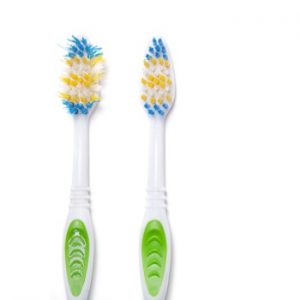
More evidence that low-calorie sweeteners are bad for your health
Studies show that artificial sweeteners can raise the risk of hypertension, metabolic syndrome, type 2 diabetes and heart disease, including stroke.

Natural Health News — In September, a ban on triclosan in over-the-counter antiseptic soaps, gels and wipes went into effect in the US. But the antibacterial ingredient is still allowed in toothpastes for its reported ability to reduce gum inflammation, plaque and cavities.
Triclosan is also still allowed in other products including clothing and cookware.
Now a study in the journal Environmental Science & Technology has found that triclosan accumulates in toothbrush bristles and other parts, and is readily released during brushing, potentially prolonging users’ exposure to the compound.
» In the US, the harmful antibacterial substance triclosan – which is hormone disrupting and can contribute to antibiotic resistance – is now banned in products like handwashes, but it is still used in toothpastes.
» Scientists in New Zealand have found that triclosan accumulates in toothbrushes over time in the bristles and soft rubbery parts such as polishing cups and tongue cleaners.
» Even if you switch to a triclosan-free toothpaste your old brush will still be releasing triclosan into your system.
» In addition, the researchers say, old toothbrushes that are thrown into landfill will release triclosan into the soil and groundwater.
This is a worry because, according to the researchers from the University of Auckland in New Zealand, past research has demonstrated that triclosan has the potential to disrupt hormones in animals and humans, contribute to antibiotic resistance and cause acute toxicity to aquatic organisms.
Uncontrolled exposures
The scientists suspected that triclosan might stick to materials commonly used on commercial toothbrush heads and get released in an uncontrolled manner, creating a hidden route of exposure and transport of the chemical that hadn’t been previously considered.
The researchers simulated toothbrushing with a range of commercial brushes and pastes. Their testing showed that more than one third of the 22 toothbrushes tested, including two children’s varieties, accumulated significant amounts of triclosan equivalent to seven to 12 doses of the amount normally used per brushing.
Toothbrushes with “polishing cups” or “cheek/tongue cleaners,” typically made of a class of materials called elastomers, absorbed the largest amounts.
Switching pastes doesn’t help
When the researchers switched to triclosan-free toothpastes but continued to use the same brushes, triclosan was continuously released from the toothbrushes over the next two weeks. This release could lead to a user receiving prolonged exposure to triclosan, and potentially to other transformation products that previously hadn’t been accounted for, even after switching toothpastes.
Additionally, regular landfill disposal of used toothbrushes that have accumulated triclosan could result in the chemical leaching into the environment.
The study also raises broader questions about the design of consumer products – particularly those used for personal care – with absorptive polymer components that are regularly exposed to chemicals during use.

Please subscribe me to your newsletter mailing list. I have read the
privacy statement